Norwich Tree Surgeons (NR1): Trees are fantastic things to have and enjoy in our gardens - they offer welcome shade on hot, sunny days, they provide a much needed home for wildlife and they produce vital oxygen for our environment. However, trees are living things and can get way too huge for our gardens in Norwich, suffer damage in windy conditions or become diseased and unstable. The person to call when you've got concerns about your trees in Norwich, is a tree surgeon.
For an array of customers in Norwich - both domestic and commercial, tree surgeons provide an important service in the maintenance and general care of trees. There are many examples of services that a trained tree surgeon in Norwich may be able to provide: the pruning of dead, weakened or intruding branches, hazard assessments and inspections, tree felling, safe tree planting, together with general tree maintenance.
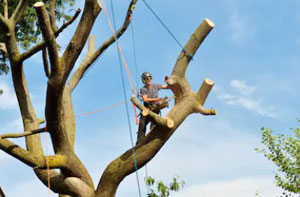
However, a tree surgeon's work certainly does not stop with trees alone. Such tasks as stump removal, hedge care, trimming and maintenance, are among the additional duties of a tree surgeon in Norwich. If you've any concerns about a tree's structural integrity, the best individual to phone is a tree surgeon, as they can effectively assess and give a full report on possible threats, and offer advice on what to do next.
Because it is such a very dangerous task, tree surgery is definitely something that must only be tackled by a professionally trained operative. Even though bypassing the costs and going with the do-it-yourself approach may appear tempting, this would definitely not be a wise decision by any stretch of the imagination. To undertake the work they do, tree surgeons have to be qualified, physically fit and experienced.
Very often, tree surgery involves the use of dangerous power tools whilst swinging from a harness in the tree and high up in the air. So, you can see why it is not a task for novices! Tree surgery is also generally conducted by a gang of skilled tree surgeons, including climbers and a ground crew, who are all experts in their field. Competing with this level of competence, experience and risk assessment to complete the work, would be nigh on impossible for any untrained individual.

Finding a reputable tree surgeon in Norwich is going to be the initial step as soon as you've established that you actually need one. But, what is the best way to accomplish this? Well, exploring such things as qualifications, experience and cost will set you on the right track. Now, we'll provide you with some handy tips for locating the perfect tree surgeon to carry out, care for and maintain your tree needs.
Checking they have the appropriate certifications is the initial step in assuring you that they are correctly accredited and competent. The governing body for tree surgeons and the organisation that issues accreditations is the the National Proficiency Tests Council (NPTC). Any Norwich tree surgeon should have the following certifications as a minimum requirement:
- NPTC 308 (CS39) - Aerial cutting of trees using free-fall techniques.
- NPTC 206/306 (CS38) - Climb a tree and perform aerial rescue.
- NPTC 201/202 (CS30) - Basic crosscutting & chainsaw maintenance.
- NPTC 203 (CS31) - Fell and process small trees up to 15 inches (380mm) in diameter.
Since gaining these certifications demonstrates that they have completed the proper training, it's well worth tracking down a tree surgeon who has them, although surprisingly this is not actually a legal requirement. Earning these qualifications should provide you with reassurance that the work will be accomplished successfully and safely. It's also crucial that some basic First Aid qualifications are held by all tree surgeons, forestry workers and arborists, and that they carry an appropriate First Aid kit in line with HSE workplace recommendations.
Next off, you can ask a few tree surgeons in Norwich to provide different estimates for the tree surgery work, and check their breakdown of costs. You might notice that the removal and disposal of the large amount of waste often generated by tree maintenance and surgery will sometimes not be included in the costs quoted. If at all possible, it is definitely best to get the tree surgeons to remove and dispose of this waste themselves, as it can involve huge cost and inconvenience if this process is left to you.
Together with this, ensure that you're ready to ask plenty of important questions when you speak with the tree surgeon. For instance, you need to establish who will be accessing your property and who is going to be doing the work. Would you be able to meet up with them before they start? Is it going to involve just one tree surgeon working on their own, or will it be a whole gang of workers? What methodology are going to be used for removing or treating the tree? Will my home or my neighbours be impacted by the work? Exactly how long will the work take?
If you ask all the right questions, you will be less likely to experience any unexpected shocks down the line.
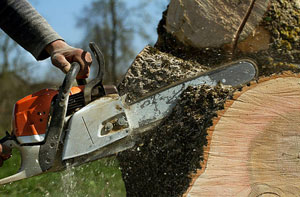
You should also listen closely to the things your tree surgeon says. This can be a great tool for evaluating their standard of expertise and professionalism before any actual work begins. If someone is talking about 'lopping and topping', this is frequently associated with rogue trader type operatives, who may well not be up to date with modern technologies and techniques. A professional, experienced and capable tree surgeon in Norwich should be using the appropriate terminology such as 'crown thinning', 'pruning', 'crown lifting', 'dead wooding' and 'crown reduction'. Although this alone should not be taken as proof of ability, in relation to the experience of your tree surgeon, it can certainly be a bit of a clue.
At the end of the day, when it comes to tree surgery or tree care, it is always worth the effort of considering a variety of different tree surgeons in Norwich. As a result, you will get a job that is skillfully undertaken, meets all your requirements and conforms to all the recommended safety measures.
Locally based Norwich tree surgery services will most likely have the postcode NR1 and the phone code 01603. They'll operate in Norwich itself, as well as nearby areas like Trowse Newton, Lakenham, Earlham, Hellesdon, Heigham Grove, Thorpe Hamlet, Thorpe Saint Andrew, Old Catton, Eaton, Mt Pleasant, Sprowston, Upper Hellesdon, and these postcodes: NR1 1PF, NR1 1DG, NR1 1JA, NR1 1NR, NR1 1PY, NR1 1DT, NR1 1JX, NR1 1ER, NR1 1PH, NR1 1QE. Checking this can make sure that you access a local tree surgeon. Norwich home and business owners can utilise these and lots of other related services.
If you require this type of service it's definitely a good idea to employ an experienced local tree surgeon. Norwich home and property owners can benefit greatly from the know-how and expertise that a fully trained professional can offer.
Chainsaws in Tree Surgery
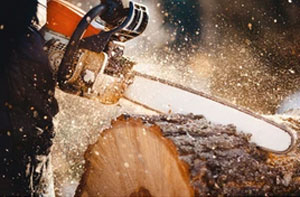
The most commonplace tool that Norwich tree surgeons use is the chainsaw. It's an effective and versatile tool, but in untrained hands, also a dangerous one. The preferred type of chainsaw with professional users is the petrol driven version, being easily handled and more portable, although nowadays you are able to obtain mains operated and rechargeable battery chainsaws. For substantial tree work, the only sensible choice is to use petrol chainsaws, because they are able to cut through tree limbs and branches of any dimensions, and are exceptionally powerful and robust.
Comprising a revolving chain lined with a series of razor-sharp teeth that is driven by a motor and cuts through the bark and wood, a chainsaw is essentially a fairly simple tool. For the varied tasks that are called for, there are different designs of chainsaw, top-handled for working at height (and which can be used with one hand if necessary), rear-handled for work at ground level (two handed) and pole saws for hard to reach branches and long distance pruning.
You will almost never find a tree surgeon in Norwich who does not use a chainsaw, although working at height a tree with a spinning blade in your hand isn't an especially safe thing to do. Being trained in the safe use and maintenance of chainsaws is a key prerequisite for any professional tree surgeon, and is vital before they can even be considered for approval by the AA (Arboricultural Association) or the ISA.
The most popular brands of chainsaw used in the UK by tree care professionals are Makita, Stihl, Husqvarna and Hyundai, although of course there are countless different makes and models.
Stump Grinding
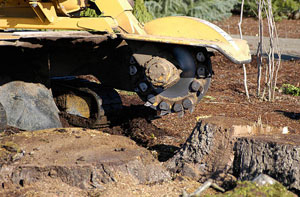
If you need to have some stump grinding done, be sure to hire the services of a tree surgeon having the proper knowhow and tools. Any self-respecting tree surgeon in Norwich will understand the significance of taking out every last piece of the tree stump to at least a 12 inch depth, so that it will not re-grow. Grinding down stubborn stumps and roots within a few millimetres of walls and structures while avoiding damage, can only be done if your chosen tree surgeon has access to the appropriate machinery. The right grinders is also able to deal with tree stumps tucked away down narrow alleys and passageways. If you are doing away with a big tree the remaining stump may be pretty enormous and depending on what you are planning to use the resulting space for afterwards, the likelihood is that the remaining stump needs to be removed to a good depth.
Crown Thinning Norwich
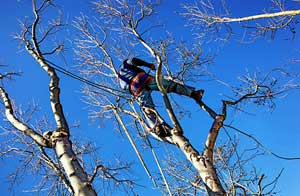
Getting rid of lesser living branches on the outer part of the tree's crown, yet not transforming the overall shape or size of that tree, is known as crown thinning. This is intended to build a uniform density of leaves, which in itself accomplishes specific goals such as: to lower the weight of the crown of the tree, to let more light to pass through, to reduce the chance of the tree being uprooted in strong winds, to ease the stress upon larger limbs as a consequence of snow, wind, ice, or gravity or to lower the tree's wind resistance. A uniform foliage density encircling uniformly spread out branches ought to be the tree surgeon's goal when carrying out crown thinning, it shouldn't alter the overall structure and size of the tree. (Tags: Crown Thin Norwich, Tree Crown Thinning Norwich, Crown Thinning Norwich)
Emergency Tree Services Norwich
Although emergencies are rare concerning trees in your garden, accidents can happen, so it might be wise to have an emergency phone number where you can reach a tree surgeon in Norwich quickly. Norwich tree surgeons expect to receive a spike in emergency calls when there are high winds and storms, which is why many offer a 24/7 service for this eventuality. The likelihood of injury or damage is higher when the weather is stormy, with branches breaking off and falling to the ground, and occasionally even whole trees collapsing. Falling branches and tree limbs can cause busted garden furniture, smashed greenhouses, squashed sheds and damaged fences, therefore instead of having to deal with the aftermath of such occurrences, avoidance is the vital thing.
There's also a requirement for emergency tree care services by the local council in the Norwich area, when streets, railway tracks and public paths get obstructed by fallen branches and trees.
When a tree has lost some of it's larger branches it can become lopsided or uneven, with more branches and weight on one side. This can be both unattractive and unsafe, so the tree may need to undergo a "re-balancing" procedure. For all these problems, you should phone a local tree surgeon in Norwich who provides emergency tree surgery services, and they'll deal with all of this for you. You should also be able to obtain 24 hour emergency tree care services in Trowse Newton, Lakenham, Earlham, Hellesdon, Heigham Grove, Thorpe Hamlet, Thorpe Saint Andrew, Old Catton, Eaton, Mt Pleasant, Sprowston, Upper Hellesdon, and Norwich itself. (Tags: Emergency Call-Outs Norwich, Emergency Tree Care Norwich, Emergency Tree Surgery Norwich, Emergency Tree Services Norwich).
Pollarding Norwich
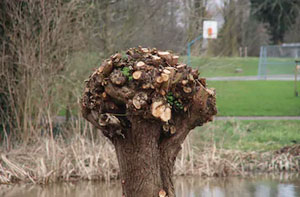
Pollarding is most importantly undertaken on grounds of health and safety, and is a procedure that is used for significantly lessening a tree's overall size when it's got too large for its setting. This method is from time to time used for visual reasons to mould a tree into an especially pleasing shape. You'll commonly notice trees which have been pollarded alongside highways in Norwich, and also pretty typically in managed hedgerows The rather bare and stark appearance that results from pollarding isn't very popular with tree lovers, since it is so different from its attractive natural state. Tree species like planes, limes, sycamores, beeches, oaks, maples and horse chestnuts are typical contenders for pollarding, and the beneficial aspect of this process is that trees which might normally have to be cut down can be preserved for generations to come.
Regular Tasks of a Tree Surgeon
- Maintain and service equipment like chainsaws and chippers.
- Cut and chip logs and branches.
- Evaluate tree health and treatment.
- Clean up area upon completion and fulfil removal of waste product from client's site.
- Deal with customers and complete administration duties.
- Climb trees to remove or prune branches as required.
- Establish dangers posed by trees.
- Be adept with power tools and machinery.
- Produce tree survey reports for both domestic and commercial clients.
- Tree planting and transplanting.
- Create telephone or on-site price quotes with the clients.
- Fell and remove trees and grind stumps.
Tree Removal Norwich

Trees are normally viewed as beneficial, therefore tree removal should actually be the final resort. Nevertheless, needless to say there are acceptable factors behind removing a tree from your garden or property in Norwich. Among the commonplace reasons for needing to remove a tree are when: your tree has grown too large for its setting, the roots of a tree are obstructing retaining walls/foundations, your tree is in the way of new construction, the tree has been damaged, the tree poses a safety threat, you have a dying/dead tree or the tree is infected. (Tags: Tree Felling Norwich, Removing Trees Norwich, Tree Removal Norwich)
Dutch Elm Disease
Devastating tree stocks and killing off tens of millons of elm trees throughout the United Kingdom over the last five decades or more, Dutch Elm Disease (Ophiostoma novo-ulmi) isn't so common now, as it previously was. Accidentally imported into the British Isles from North America (Canada) in the late 1960's, DED (Dutch Elm Disease) is spread by the elm bark beetle (especially the Scolytus genus) and caused by a fungus called Ophiostoma novo-ulmi.
Its fast spread was mainly down to to elm products such as saplings, crates, bark mulch, and logs with the bark still attached, being moved around the United Kingdom. Believed to have originally come from Asia (probably Japan), Dutch Elm Disease didn't just affect trees in Britain, but also decimated the stocks of elms in mainland Europe and North America.
The symptoms of Dutch Elm disease typically first appear in early summer, and manifest themselves as:
- A "shepherd's crook" reaction on affected twigs.
- Clusters of leaves turning yellow and wilting.
- Twigs with rings or spots in cross-section.
- Affected shoots dying back from the tips.
As a consequence of disease and the felling of dead, infected and dying trees, there are not many large elms surviving in the UK countryside, therefore the spread has slowed and the favourite habitat of the beetle essentially removed. There is now an ongoing project for the propagation of young trees that are so far resistant to Dutch Elm Disease.
You can get hold of your local tree surgeon for guidance, if you have suspicions you may have infected elm trees in your garden in Norwich, or you can request a diagnosis from the THDAS (Tree Health Diagnostic and Advisory Service), for which you will be charged.
Tree families affected: Ulmacae and Zelkova.
Agent of spread - beetles of the Scolytus and Hylorgopinus genera.
Cause - fungi Ophiostoma Novo-Ulmi and Ophiostoma Ulmi.
Tree Transplanting Norwich
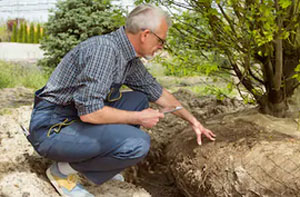
Moving mature trees is an intricate, yet relatively simple process, due mainly to modern vehicle mounted tree spades, tree lifting equipment and other specialised tools. A professional tree moving contractor in Norwich should be able to move any trees that you have on your land, or transplant mature trees for an instant aesthetic appeal.
If you have no choice but to transplant a tree in Norwich during the warmer seasons of spring and summer, you should lessen the stress of the process on the tree's root system by thoroughly soaking the ground before any work begins. Removing a fully grown tree involves a mechanical tree spade digging down and encircling the root-ball, before lifting the entire tree, unharmed, from the earth. The uplifted tree can then be stored temporarily before its transplanting in a new location.
If you want to move a tree from ground that's got a preservation order upon it, a professional tree moving contractor in Norwich can liaise with relevant authorities to approve replanting in a suitable area.
Protecting Trees and Shrubs in the Wintertime
Despite the fact that lengthy periods of extreme cold are quite rare in Norwich it could still be worthwhile to consider a few measures for protecting your trees and shrubs when the weather conditions turn sour. In fact, even shrubs, plants and trees that we generally consider to be hardy, can benefit from some additional protection during the colder winter months.
Although the majority of your trees may have already shed their leaves by wintertime in Norwich, it's strong winds and storms that cause the biggest worry, and although they may offer less wind resistance, they might still be damaged. If you're worried about the condition of a tree, or it looks like it could topple over, you should get in touch with a local tree surgeon to inspect it and carry out a risk assessment. You can also have issues with breaking branches due to heavy snow, so when this sort of weather is anticipated, keep a watch out for potential damage. Protection from frost and ice may be required for some trees and shrubs (particularly freshly planted ones), and a deep layer of mulch spread around their bases can help keep their roots from freezing, and allow them to absorb much needed moisture.
Ash Dieback
Most likely to decimate approximately 80 percent of the current British ash tree stock, over the coming years, ash dieback is a deadly fungal disease of ash trees, the first case of which was documented in Britain in 2012. Ash dieback is set to have a huge impact on our beloved countryside, piled onto the damage caused by the earlier Dutch Elm Disease crisis.
Trees of the Fraxinus genus are affected by this lethal disease, but it has an especially disastrous effect on Fraxinus excelsior (the common ash), which is the most widespread species in Britain. Thought to have originated in Asia where the native species of ash were more resistant, the fungus which causes the disease is called Hymenoscyphus fraxineus (H. fraxineus), and it blocks a tree's water transport (vascular) systems, causing it to die.
Already present in most parts of Great Britain, ash dieback (or chalara ash dieback as it is sometimes known) is dispersed by wind blown spores which can travel for tens of miles.
The unmistakeable symptoms of ash dieback are:
- Dark brown necrotic lesions (often diamond shaped) form where branches connect to trunk, and the inner bark under the lesions looks brownish grey.
- New epicormic growth appearing from buds that were previously dormant.
- New shoots and leaves that are visibly dying during the summer.
- Leaves with dark patches that develop during mid to late summer.
- Foliage that wilts, turns black and falls prematurely.
Some ash trees are able to resist initial infections, but as the disease returns every year, they ultimately succumb. There's not yet any cure or effective treatment for chalara ash dieback, and because it is a disease that's airborne, no certain way of stopping it spreading.
Although cases of ash dieback can be reported to the "Tree Alert Service" provided by the Forestry Commission, it's so commonplace right through Britain that they are really only interested in hearing about cases which are discovered in areas not previously affected. If you suspect you have a tree suffering from ash dieback in your garden in Norwich, you can still speak to a local tree surgeon, who can offer advice and guidance about how to proceed - ultimately the tree or trees will have to be chopped down and removed.
(Tags: Ash Dieback Norwich, Symptoms of Ash Dieback, Spotting Ash Dieback).Management of Vegetation

It isn't simply the maintenance and removal of trees that your local Norwich tree surgeon will be prepared to assist you with, but also any type of rampant plant growth that's clogging up your land. Often tree specialists will be delighted to remove overgrown vegetation, shrubs, bushes and weeds which might be thriving near sheds, driveways, garages, pathways or buildings, and generally creating a problem. If you're to maintain your precious garden effectively then all of this ever increasing growth should be eliminated every few months, and if you find you've got the time and inclination then this is undoubtedly a job that you might undertake on your own if you're fit and well, or you could book in your local tree surgeon to come now and again to keep it looking good. Vegetation management is a must if you're going to have easy and safe entry to every area of your property and if this is ignored the plants and vegetation can soon take over and take a lot of the enjoyment out of your garden. Besides anything else the garden will look a picture when maintained properly. (Tags: De-Vegetation Services Norfolk, Vegetation Control Norfolk, Vegetation Management Norfolk)
The International Society of Arboriculture (ISA)
The ISA (International Society of Arboriculture) is a non-profit, international organisation based in Atlanta, Georgia, United States, fostering the benefits and awareness of trees. Serving the tree care industry throughout the world, the ISA is a membership association that champions the professional practice of arboriculture, and provides qualifications for tree care professionals.
Supporting best tree care practices via educational services, events and publications, the ISA has a firm focus on enabling individuals in the tree care sector develop their knowledge, skills and arboricultural expertise wherever possible.
In mid-2016 the UK's Arboricultural Association (AA) became an associate organisation of the International Society of Arboriculture after signing a partnership agreement with them. This allowed the two organisations to strengthen their relationship, whilst providing additional opportunities for any tree care professional in the UK and Ireland who's a member of the ISA. Arboricultural Association members in the UK now benefit from being part of a global network of tree care professionals. Boasting over twenty two thousand members internationally the International Society of Arboriculture now has associate organisations and professional affiliates in EXTRArepair of storm damaged trees, dead wooding, woodchipping, brush cutting, tree waste removal, site clearance, tree watering, tree lightening protection, crown lifting, tree removal, dead-wooding, retrenchment pruning, hedge trimming, emergency tree surgery, crown removal in Norwich, monitoring of tree health, root removal, cabling, tree topping, tree cutting in Norwich, tree transplanting in Norwich, hedge reduction, tree felling, shrub maintenance Norwich, formative pruning in Norwich, forestry management, tree maintenance in Norwich, vegetation management, stump removal, tree reduction, hedge lowering, waste removal, tree bracing, tree pruning, crown thinningTEN, and the United Kingdom.
Wood Chipping Norwich

In order to process the large amount of vegetation, branches and tree limbs that result from their work, the majority of Norwich tree surgeons will use wood chipping machines. Swiftly gobbling up as much as forty tonnes of material each hour, these awesome wood chipping machines can handle just about as much as you can feed into them. Even the smaller, more commonly used machines can process a respectable five tonnes every hour without much effort.
Chipping down the branches in this way makes them less cumbersome to transport and also produces a valuable by-product that is good for various purposes such as, biomass solid fuel, garden walkways, weed prevention, landscaping, wood pulp, cultivating mushrooms, ecosystem restoration and mulch in gardening.
The majority of Norwich tree surgeons will be glad to let you keep the wood chips that are generated during your tree surgery work, if you've a good use that you want to put them to, if not they will generally take them away to use on other projects. Tree surgeons are an excellent source for wood chippings that you can use for various purposes in your garden, even if you do not require any tree surgery work doing on your property in Norwich. Some tree surgeons will supply you with wood chippings free, others will charge you, especially if you need to have them delivered.
Wood chipping machines are made by several companies, some of the most widely known brands include Forest Master, Crytec, T-Mech and Timberwolf.
Coming Soon: Tree pruning Norwich.
Tree Surgery Tasks Norwich

Norwich tree surgeons will likely help you with repair of storm damaged trees, dead wooding, woodchipping, brush cutting, tree waste removal, site clearance, tree watering, tree lightening protection, crown lifting, tree removal, dead-wooding, retrenchment pruning, hedge trimming, emergency tree surgery, crown removal in Norwich, monitoring of tree health, root removal, cabling, tree topping, tree cutting in Norwich, tree transplanting in Norwich, hedge reduction, tree felling, shrub maintenance Norwich, formative pruning in Norwich, forestry management, tree maintenance in Norwich, vegetation management, stump removal, tree reduction, hedge lowering, waste removal, tree bracing, tree pruning, crown thinning and other tree surgeon services in Norwich, Norfolk. Listed are just some of the tasks that are conducted by a local tree surgeon. Norwich providers will be happy to tell you about their full range of services.
Getting Advice and Help
To guarantee that you employ a tree surgeon who's both competent and who'll not inflict permanent damage on your precious trees, there are several specific questions that you must ask when searching for a tree surgeon in Norwich. Suitable questions ought to be something like: Are you joined to a professional association (such as The International Society of Arboriculture or the Arboricultural Association)? Can you give references from past customers? Have you got employers and public liability insurance? Will you give me a quote in writing? Do you and your workers have the proper qualifications and certificates (for using chainsaws and tree care)? Do your working practices meet the British Standard (BS3998)? You ought to look elsewhere for a tree surgeon if you do not receive acceptable responses to any of these basic questions.

To find a great deal of handy info concerning ways to choose a reliable tree surgeon, in addition to a searchable directory of registered tree surgeons in the United Kingdom, you should visit the AA (Arboricultural Association) website. The International Society of Arboriculture (ISA) is another great resource which boasts a "verify tree surgeon credentials" tool (here) and a "find a tree surgeon" tool. You might also like to pay a visit to the Wikipedia "Arborist" article here, to find much more info on tree surgery as an occupation. The Government backed Trustmark is also a splendid place for uncovering reliable tradesmen, tree surgeons included.
Tree Surgeons Norfolk
In Norfolk you'll also find: Beeston Regis tree management, Hellesdon tree surgery, Mattishall tree care, Beetley tree care, Reepham tree surgeon, Diss tree surgery, Horning tree surgeons, West Runton tree surgeons, Upwell tree surgeons, Great Plumstead tree management, Fleggburgh tree care, Brooke tree care services, Runton tree surgeon, Southery tree surgery, Belton tree management, Easton tree surgery, Trunch tree surgery, Sheringham tree care, Wells Next the Sea tree care services, Filby tree care services, Brundall tree care services, Tattersett tree surgeon, Thurton tree management, West Winch tree surgeon, Rackheath tree management, Roydon tree care services, Saham Toney tree surgeon, Wicklewood tree surgeons. All over the Norfolk region you'll be able to locate tree surgeons who will offer high quality services for your tree care requirements. If you can't identify the perfect tree surgeon in Norwich itself you will doubtless be able to uncover one near at hand.
Tree Surgeons Near Norwich: Also find: Sprowston tree surgeons, Lakenham tree surgeons, Hellesdon tree surgeons, Upper Hellesdon tree surgeons, Thorpe Saint Andrew tree surgeons, Trowse Newton tree surgeons, Eaton tree surgeons, Old Catton tree surgeons, Thorpe Hamlet tree surgeons, Mt Pleasant tree surgeons, Heigham Grove tree surgeons, Earlham here. All of these towns and villages are covered by a local tree surgeon. Norwich home and property owners can get price quotes by clicking here.
More Norwich Trades: Of course, whenever you happen to be having tree surgery carried out in Norwich, Norfolk, you will likely need other garden related services, and along with a tree surgeon in Norwich, Norfolk, you might also need garden digging services in Norwich, lawn mowing in Norwich, landscapers in Norwich, garden wall construction in Norwich, garden shed builders in Norwich, hedge cutting in Norwich, garden rubbish removal in Norwich, garden decking in Norwich, block pavers in Norwich, fence builders in Norwich, garden design in Norwich, patio installation in Norwich, SKIP HIRE in Norwich, garden clearances in Norwich, artifical grass in Norwich, garden pond builders in Norwich, and other different Norwich tradespeople.
Tree Surgeons Around Norwich: Tree surgery quotations were recently asked for by folks residing in the following Norwich streets: Barnby Road, Aspland Road, The Thicket, Birch Close, Basey Road, Sea View Road, Talbot Square, Birch Court, Birbeck Way, Church Farm Barns, Thorpe Close, The Hedgerows, Abbey Lane, The Ridings, Shepherds Close, Calvert Street, Durham Street, Birtles Way, The Swale, Sir Williams Close, Aldeby Road, Tollhouse Road, Saffron Square, Bayfield Close, Charles Close, Aitken Close, The Boltons, Augustus Hare Drive, Scottow Row, and in these postcodes: NR1 1PF, NR1 1DG, NR1 1JA, NR1 1NR, NR1 1PY, NR1 1DT, NR1 1JX, NR1 1ER, NR1 1PH, NR1 1QE. Work was completed in these locations by a qualified tree surgeon. Norwich home and business owners were given competent and top notch tree surgery services on every occasion.
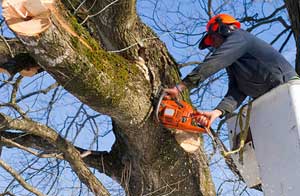 Tree Surgeon Norwich
Tree Surgeon Norwich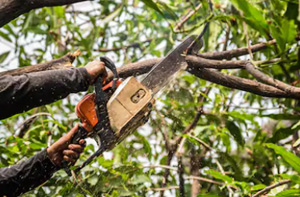 Tree Surgeons Norwich
Tree Surgeons Norwich Tree Surgery Norwich
Tree Surgery NorwichMore Norfolk Tree Surgeons: Norfolk tree surgeons: Hingham, Hethersett, Gorleston, Drayton, Hunstanton, Wymondham, Fakenham, Watton, Great Yarmouth, Dereham, North Walsham, Loddon, Downham Market, Aylsham, Dersingham, Stalham, Wells-next-the-Sea, Thetford, Swaffham, Cromer, Holt, Reepham, Old Catton, Diss, Bradwell, Norwich, Taverham, Thorpe St Andrew, Attleborough, Hellesdon, Heacham, Acle, Sprowston, Caister-on-Sea, Sheringham, Costessey and Kings Lynn.
To find out local Norwich information check here
Tree Surgery NR1 area, 01603.
More Trades: Gate Fitters - Gutter Cleaning - Tilers - Carpet Fitters - Carpenters
Forest Management Norwich - Tree Surgeons Norwich - Tree Management Norwich - Tree Care Norwich - Tree Removal Norwich - Root Removal Norwich - Tree Surgeon Norwich - Tree Surgeon Near Me - Vegetation Control Norwich





